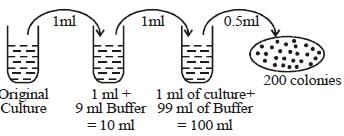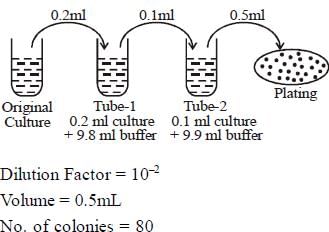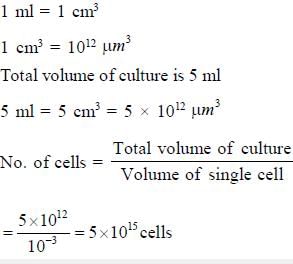Microbiology MCQ 2 - IIT JAM MCQ
21 Questions MCQ Test - Microbiology MCQ 2
1 ml of microbial culture was diluted to 10ml and 1ml of diluted culture was further diluted by adding 99ml of buffer. 0.5 ml of final culture was plated on to an agar plate. Then, 200 colonies were observed. What was the number of bacteria per ml in the original culture?
| 1 Crore+ students have signed up on EduRev. Have you? Download the App |
In a microbial culture, the maximum synthesis of antibiotics occurs in
Which of the following is not true for photolithoautotrophic organism.
Correct sequence of events that occur during lytic cycle of bacteriophage infection.
P. Synthesis of viral nucleic acid and protein
Q. Release of new viruses by lysis of host cell
R. Attachment of virus on the surface of bacteria
S. Assembly and packaging of new virus
T. Penetration of viral DNA into the host
The presence of D-amino acids in the cross links of peptidoglycan layer is most likely because
Which of the following is/are the characteristic(s) of exotoxin?
HIV replicates its genome using unique mechanisms. Which of the following statements regarding the same are correct?
A microorganism has a specific growth rate of 2.8 h–1, its doubling time will be _______ minutes. (Round off to two deimal places).
A bacterium of cocci group has a diameter of 3µm . Calculate the ratio of its surface area to volume (in ) _________(Answer should be an integer)
0.2 ml of a microbial culture was diluted by adding 9.8ml of buffer to 10 ml. 0.1ml of this was further diluted by adding 9.9 ml of buffer to 10 ml. Plating 0.5 ml from 2nd tube yields 80 colonies. Cell density in original culture was ____________ x 104 cells. (Round off to one decimal place)
Volume of a single microbial cell is 10-3 um3. The number of cells present in its 5ml of culture will be_______________ 1015 cells. (Answer should be an integer)
























